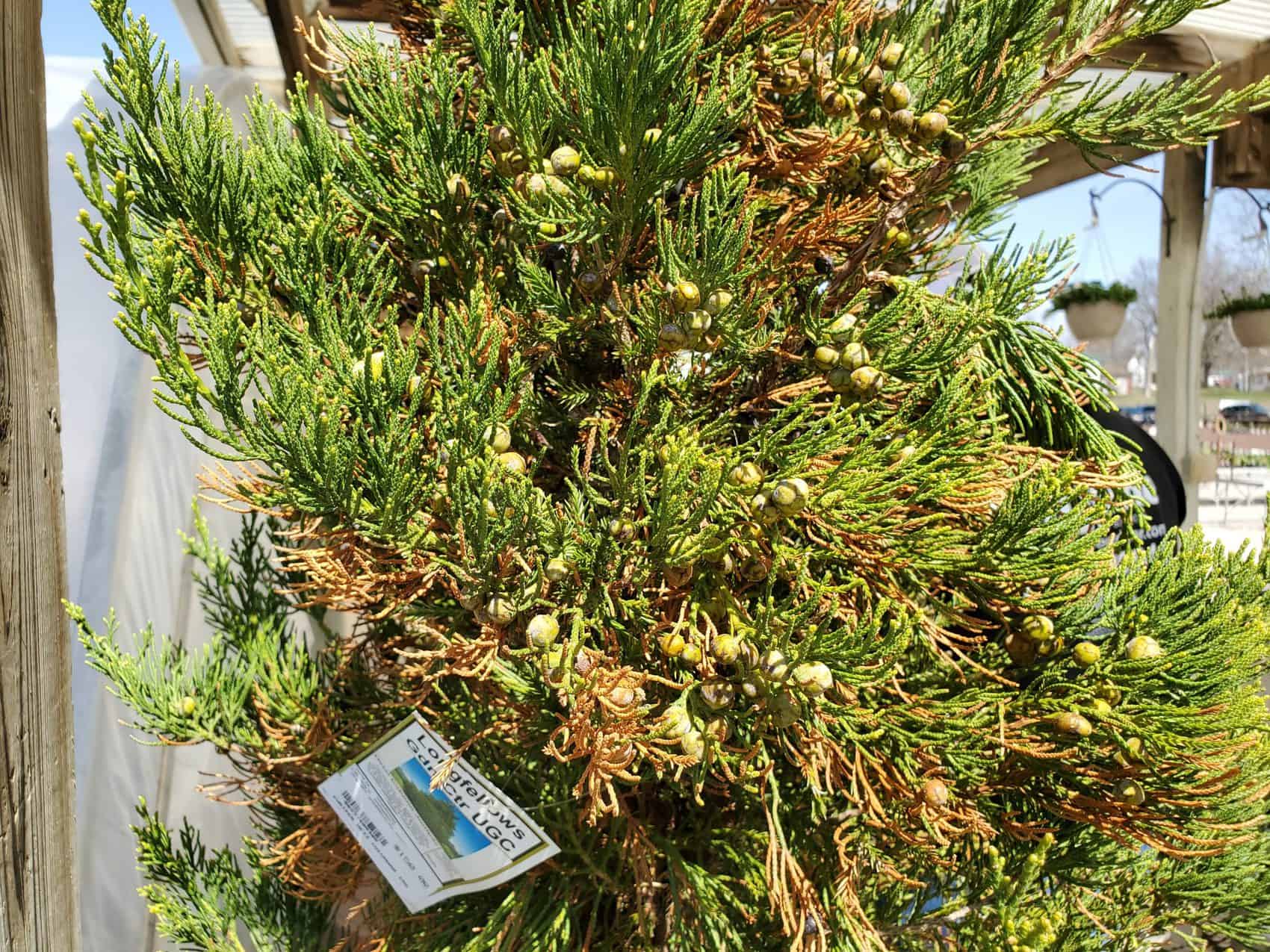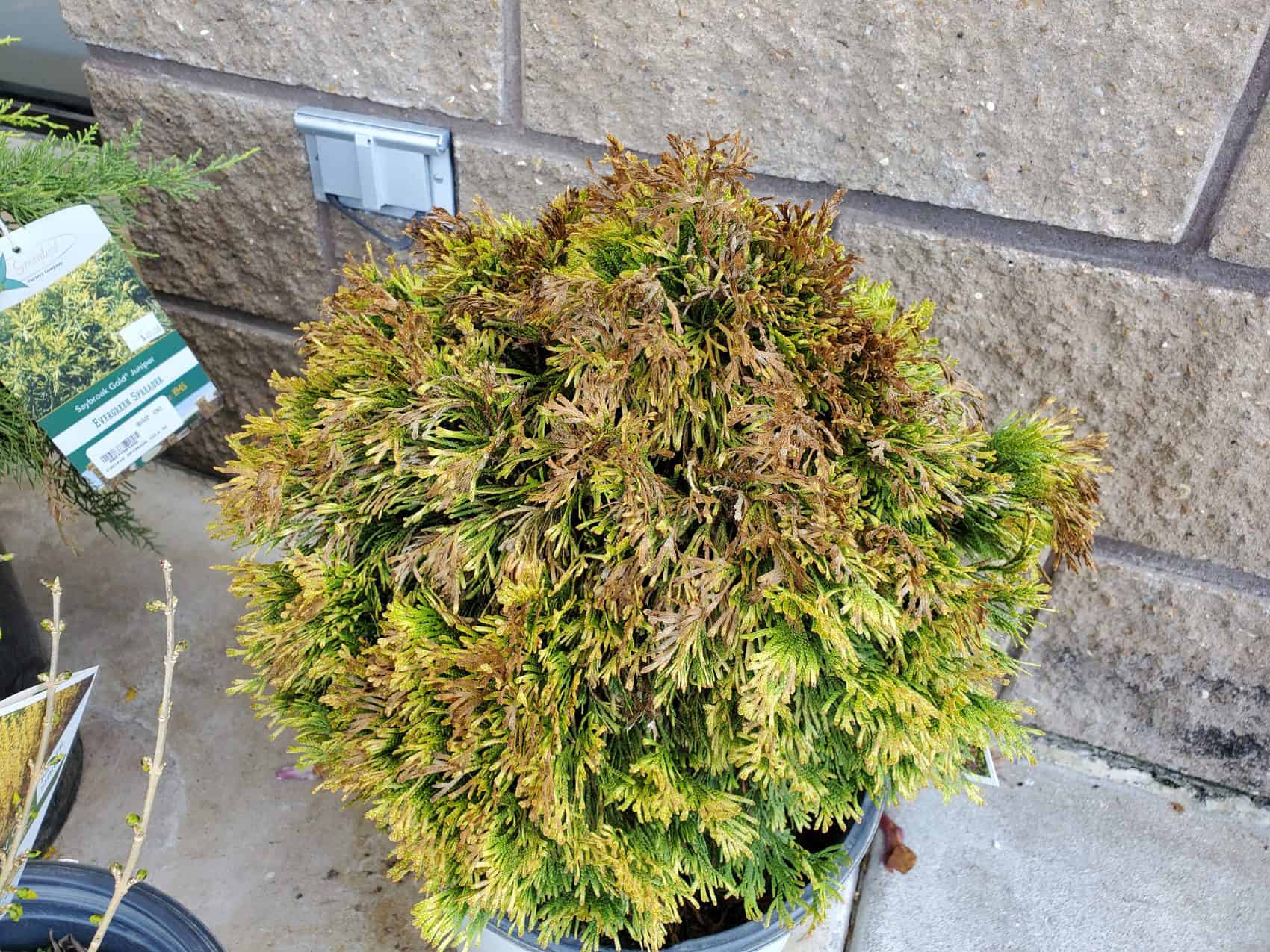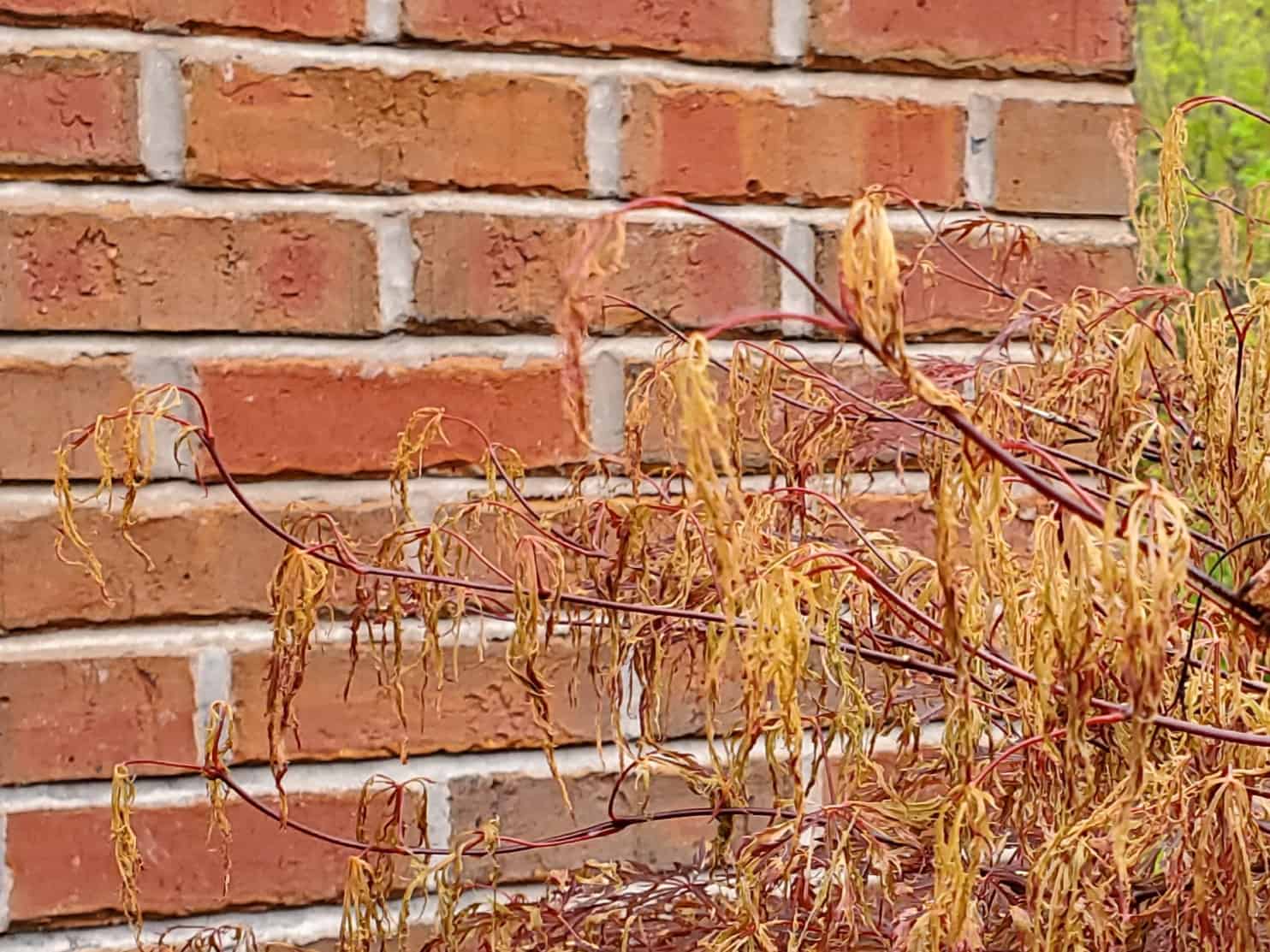One of the mildest winters on record ended with a horrific sweep across our country with record-low temperatures in February. What made the damage so extensive was:
1) The warm weather up until mid-February didn’t allow plant tissue to become acclimated to below zero temperatures.
2) The length of the cold spell lasted close to two weeks, allowing for tissue to be damaged deeply and thoroughly.
Damage from the February freeze may take 2-3 months to show up and may show up in any of these different ways: slow-to-emerge growth, sections of plants with no new growth, brown patches, scattered clusters of needles on evergreens, dead tips, and just plain dead plants are all symptoms of winter damage.
The Two Freezes –
It wasn’t just the February freeze that caused a lot of damage. The cold spell between April 20 and 22 was equally devastating.
Temperatures only dipped down to 30 and 28 degrees those two nights, but plants had leafed out and were actively growing. See the photo of the Japanese maple below. The new growth had emerged and was about 50% expanded to their full size, then were totally destroyed during that short time.
Leaves closer to the ground or the house were untouched. It remains to be seen whether new growth will be able to emerge from those damaged tips.
Freeze damage may continue to show up on plants over the next few weeks. Some plants will survive…others will not.
What to do?
A light fertilization right now is about all that anyone can do. It will help push out any new growth potential the plant has. The pleasant weather we are having right now also helps plants to do their best.
If new growth does emerge and the plant appears to be recovering, avoid any stress such as drought by following our watering guidelines. Inspect for insect and disease activity, especially borer damage. Stress compounds already existing problems. The light fertilizing and reducing stress are the only things one can do to help a damaged plant survive.
Make Good Plant Choices –
Missouri is a state of rapidly changing and drastic weather conditions. Many plants can’t adapt to these changes, sometimes experiencing severe stress or death even after being well established, and this continues to puzzle gardeners as to “why this year?”.
Interestingly, our Missouri native plants seldom experience these devastating results. They have adapted to our crazy weather. The next time you are tempted by a Japanese maple, think about this logical fact. Native works best in Missouri.






